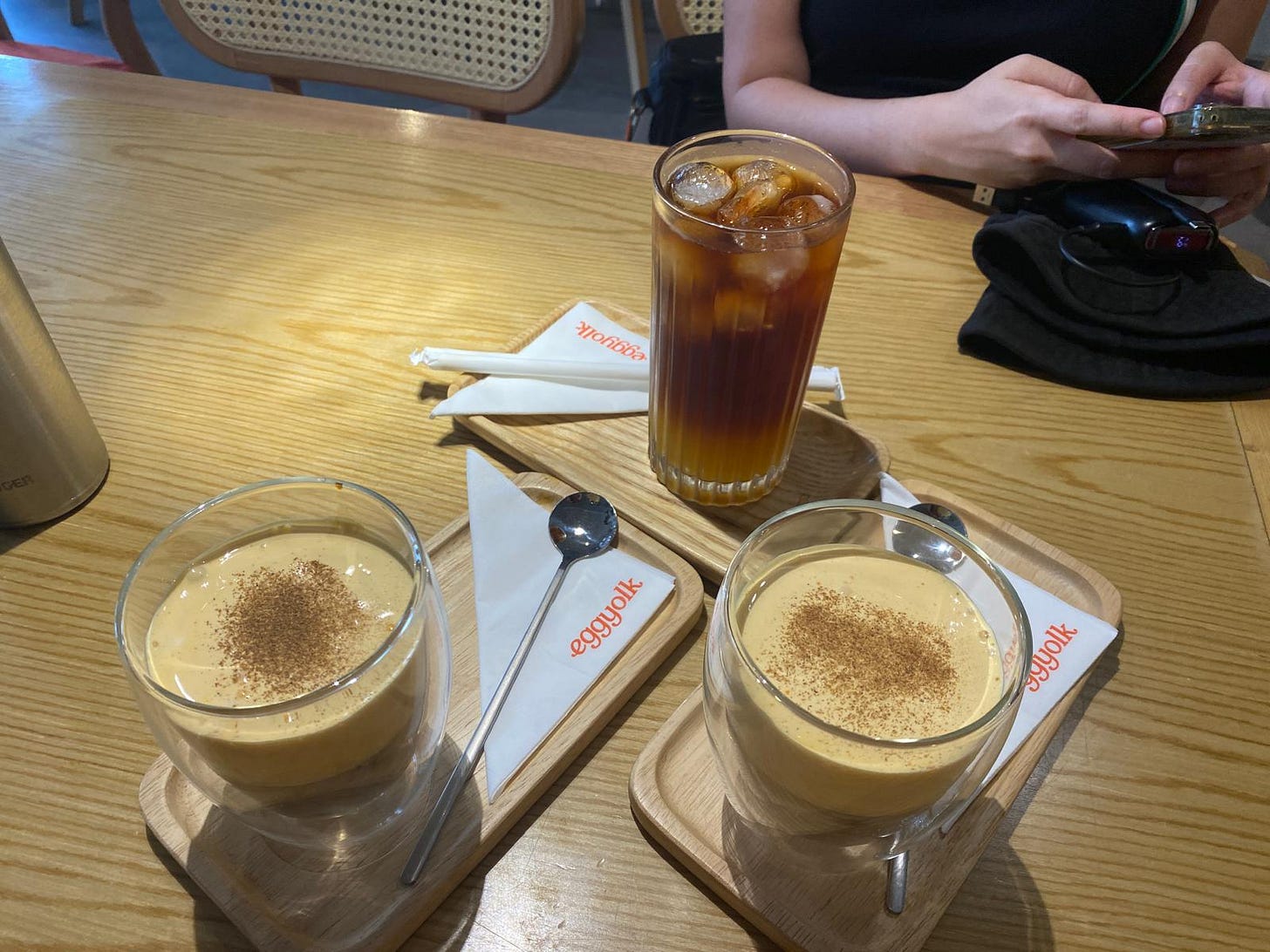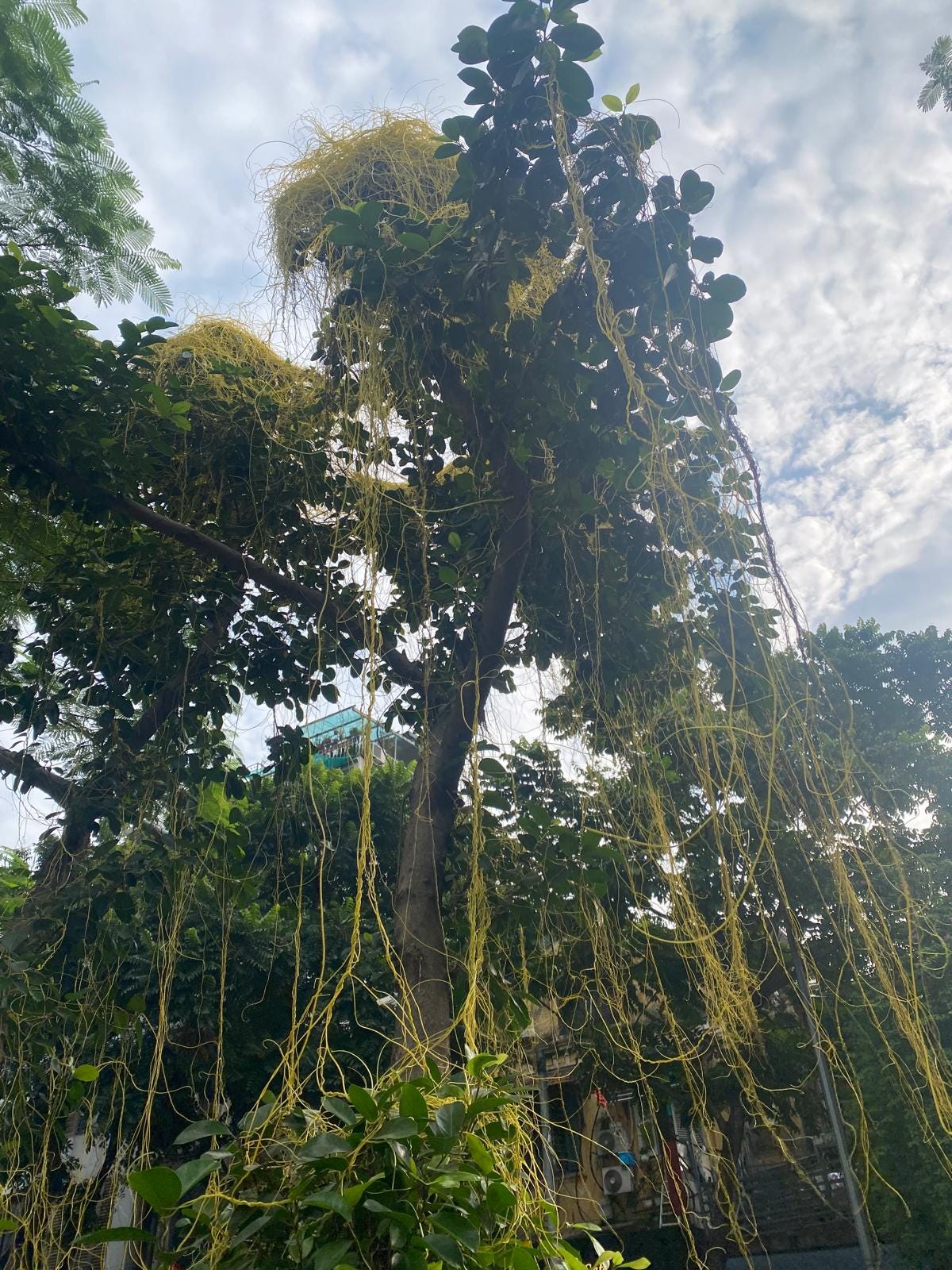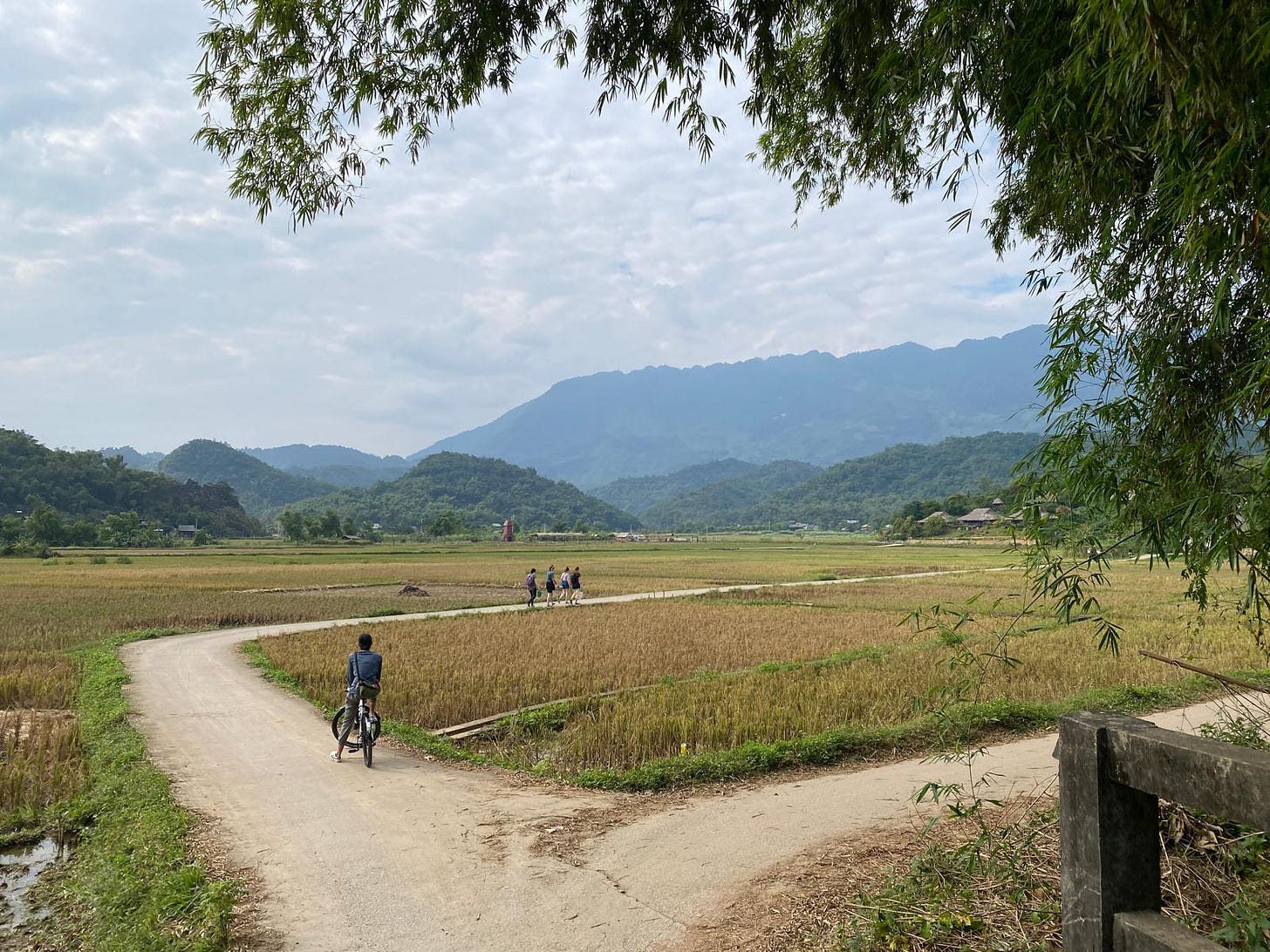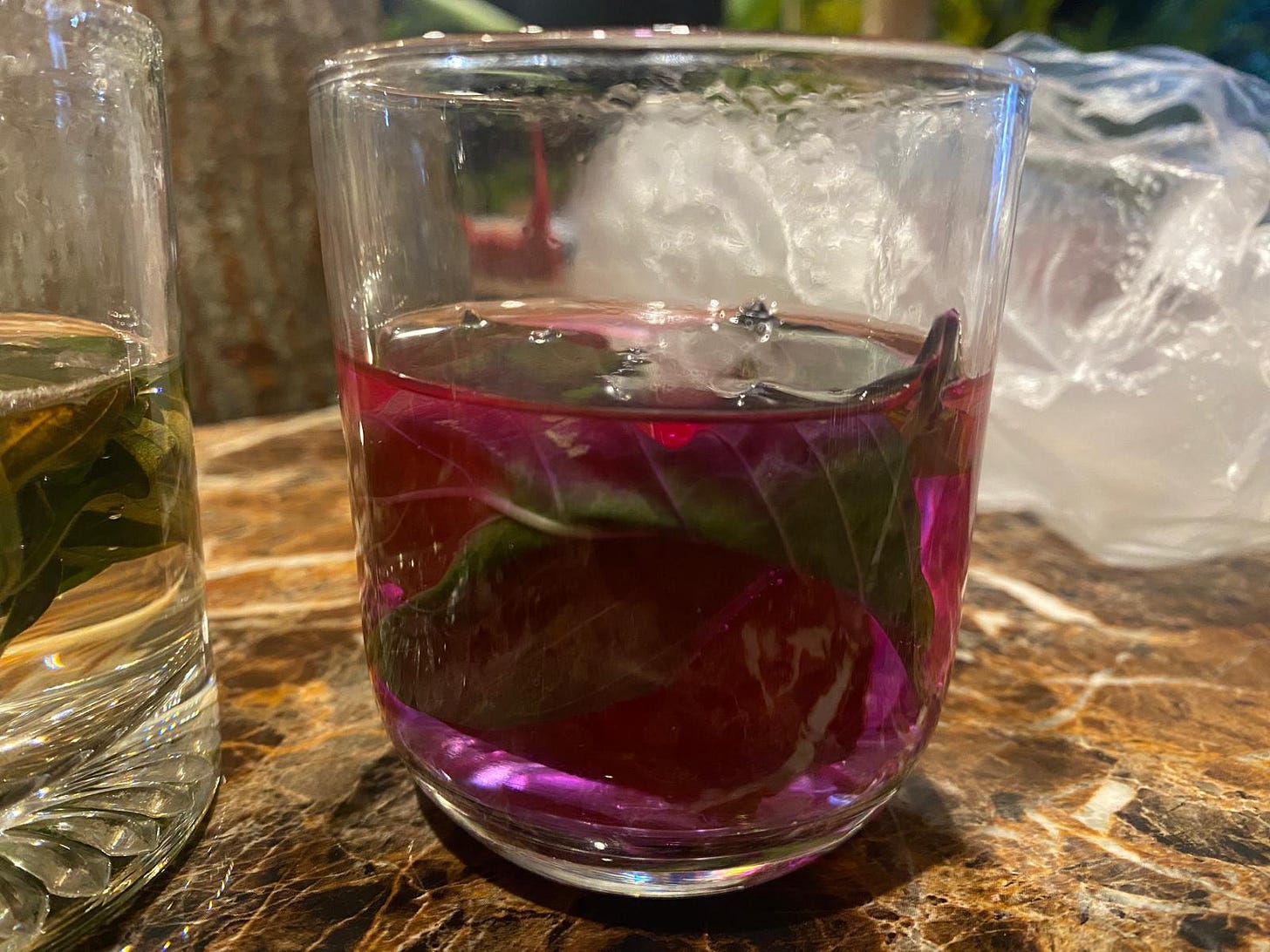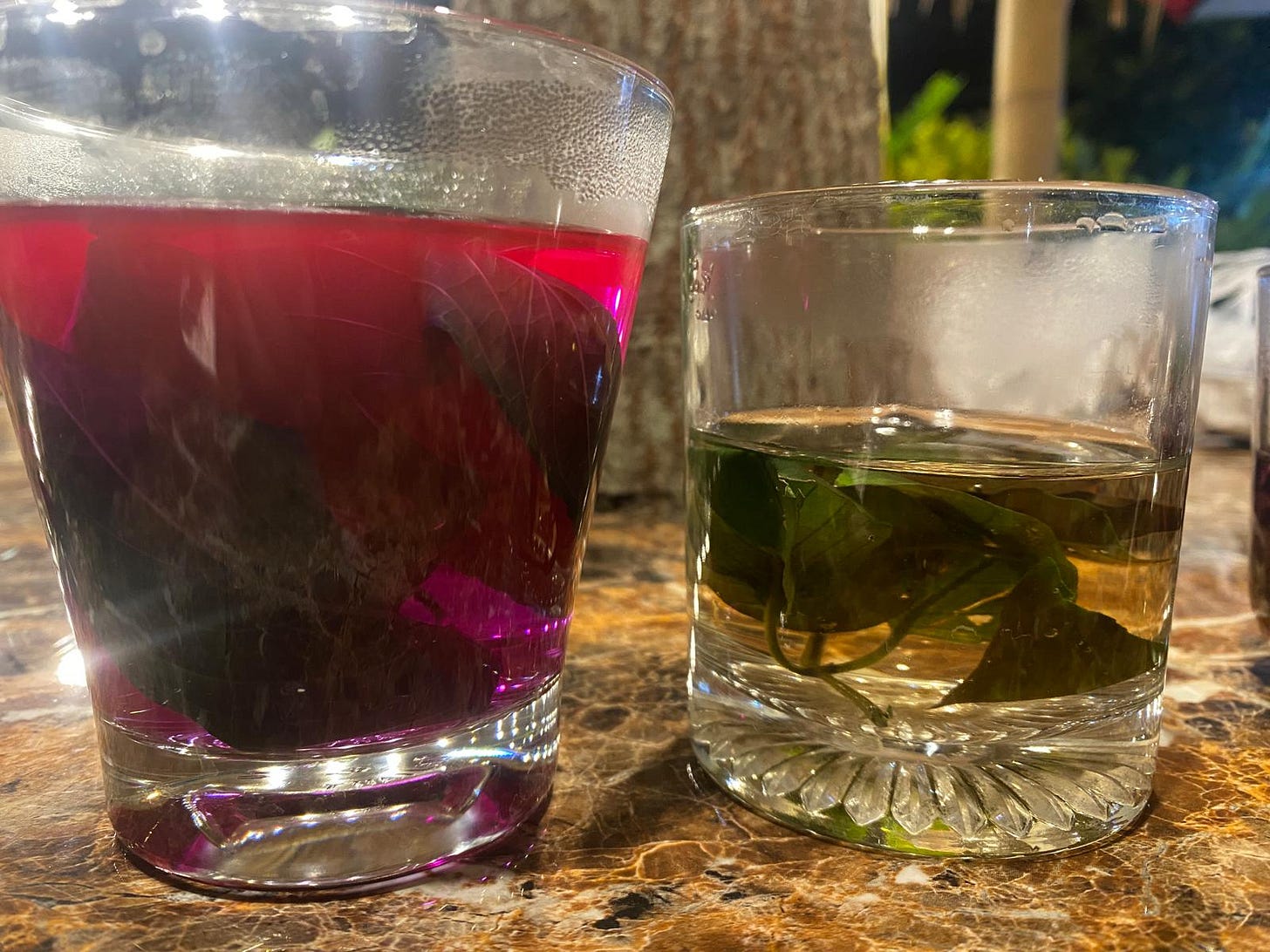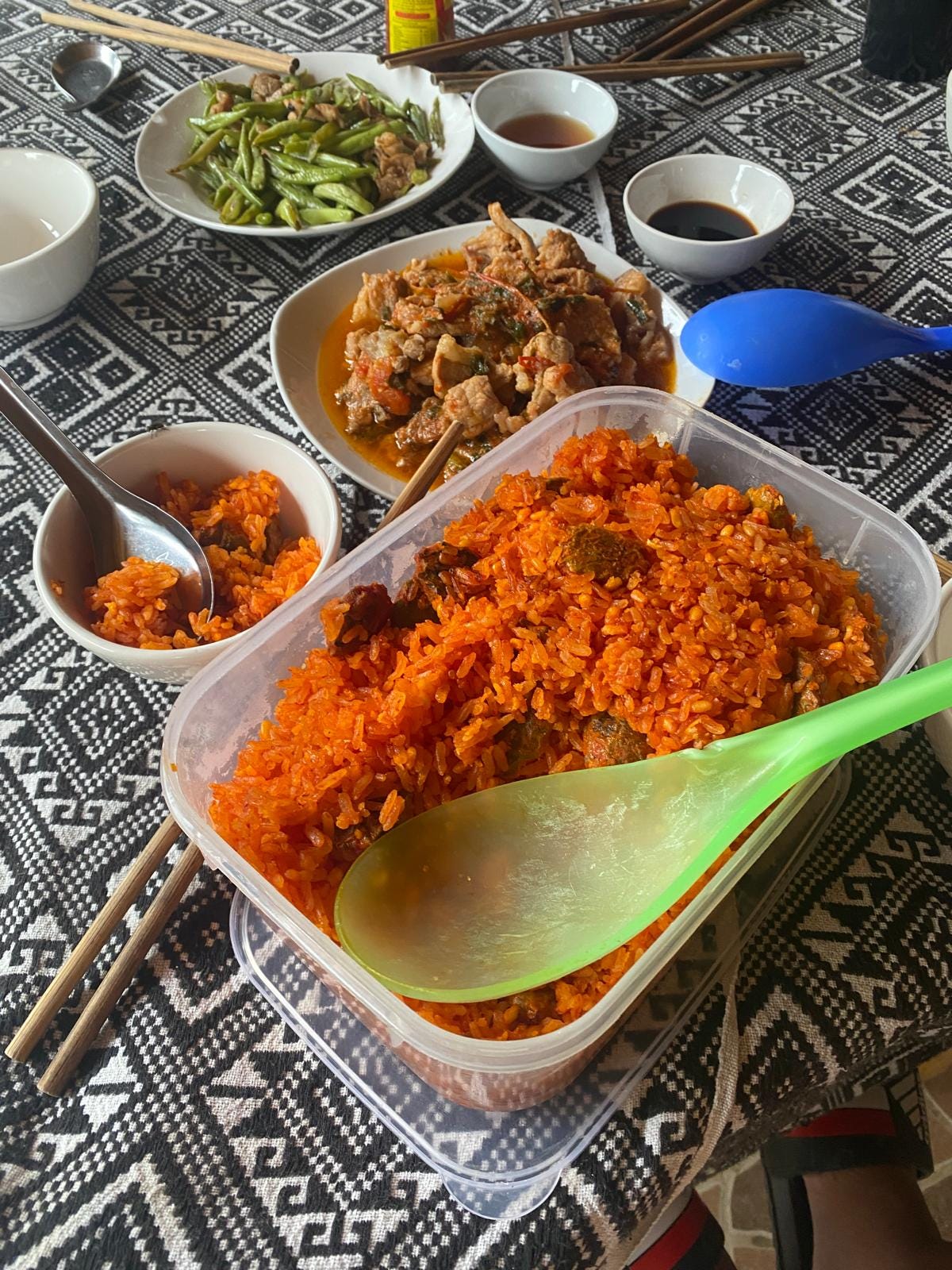Hello folks!
We recently got back from a visit to Hanoi and her neighbouring town of Mai Chau just three hours away. As we took a taxi from the airport to Hanoi Old Quarter, we noticed the city smog has gotten a lot worse since our last visit, shrouding over the city in a thick acrid filter. The traffic has become even more chaotic; perhaps a sign of a city throttling on max for a bit too long?
Despite the air pollution that felt difficult to breathe in, some plants seem unbothered. We spotted many green-yellow vines that have found their way all over the crowns of many trees. At first, they look very similar to the love vine Cassytha filiformis that we harvested and made ink from the Changi coast a few letters back, but a friend from Taiwan who makes tea with edible weeds (@haveaweedday) identified them as Cuscuta chinensis 菟丝子, an edible plant with medicinal properties. Unfortunately, it doesn’t help with respiratory issues.
We later met up with our friend Wei (illustrator who recently started writing on Substack as @weimannyart), and left the city for Mai Chau, a quiet town known for cycling paths that wind around a valley of rice fields. We learnt from our first homestay host, Lim (who prepares the most delicious Vietnamese platter Bún Đậu Mắm Tôm), that the White Tai people are the largest ethnic group in the area and that some families still practise textile weaving in the area.
In November, the rice has already been harvested and the stalks left to dry in hues of yellows and browns. Somehow, we pedaled ourselves in front of a big banner “Jungle Brews”, a home-based business run by Dat who sells his own seasonally produced rice wines, with many exciting flavours that come from infusing the essence of local fruits such as wild banana, passionfruit, roselle, mulberry, and guava! He used to work as a graphic designer in Hanoi but decided to come back to his hometown where he could work on this family business while doing freelance work. His family has been the town’s main source of homebrewed rice wine for a while, and we felt so happy to be able to taste all his beautiful creations that day.

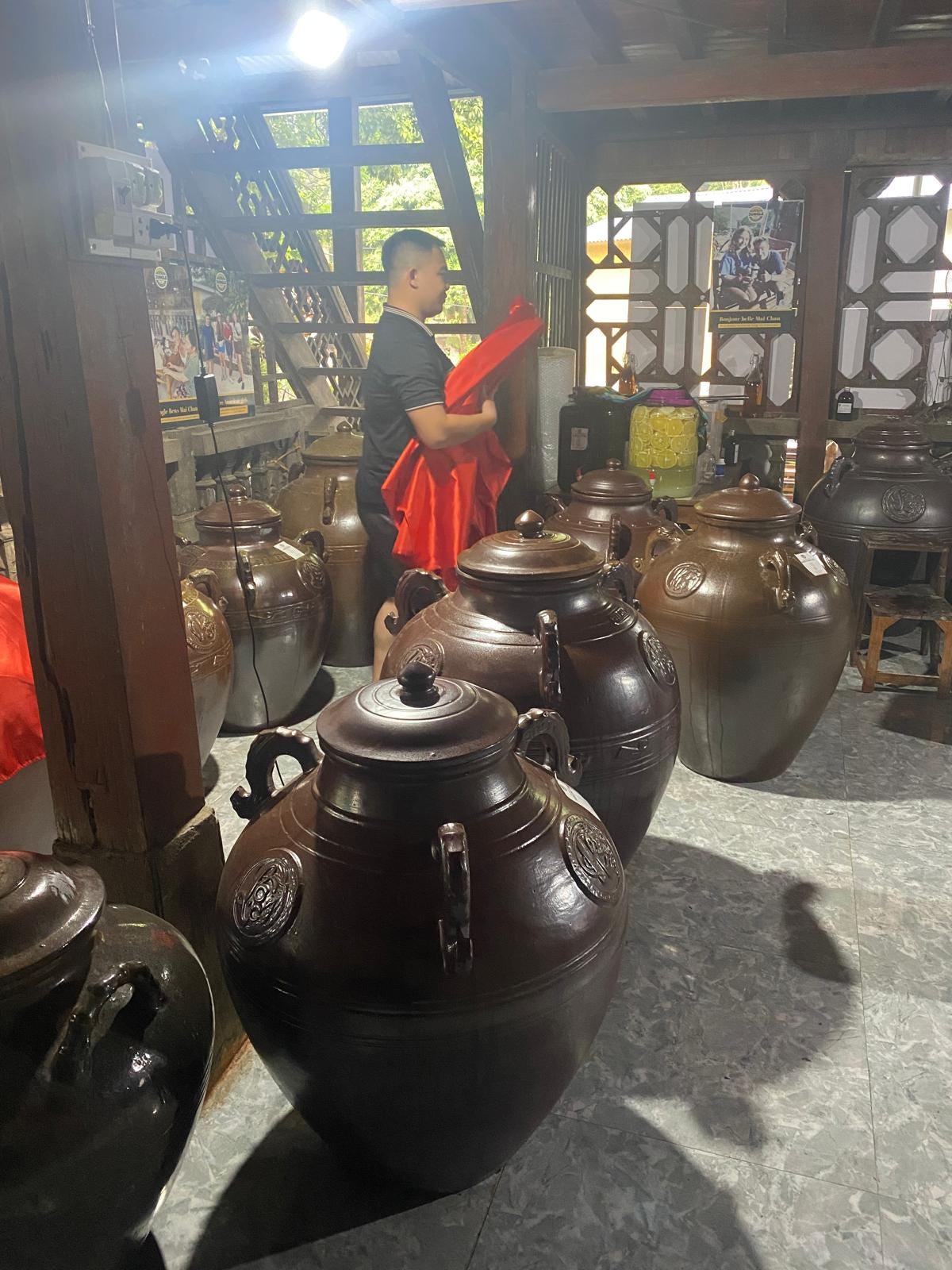
Thanks to Wei’s extraversion energy, he generously invited us over again for a meal, grilling up a huge catfish with a generous mountain of vegetables alongside the rice. During our conversations, we asked about their version of traditional coloured sticky rice that we heard was made during the Tết celebrations, which happens on the same day as our Chinese New Year, in Mai Chau. We had only read about it online, and being curious about the plants (becoming an occupational hazard), we asked what they used to dye the grains into the vibrant tones.
Dat’s mother grows the plant that gifts magenta next to the family’s house. Following him through a narrow dirt path just a few meters away from where we were drinking, we were pointed towards a thriving patch of plants growing next to a pond.
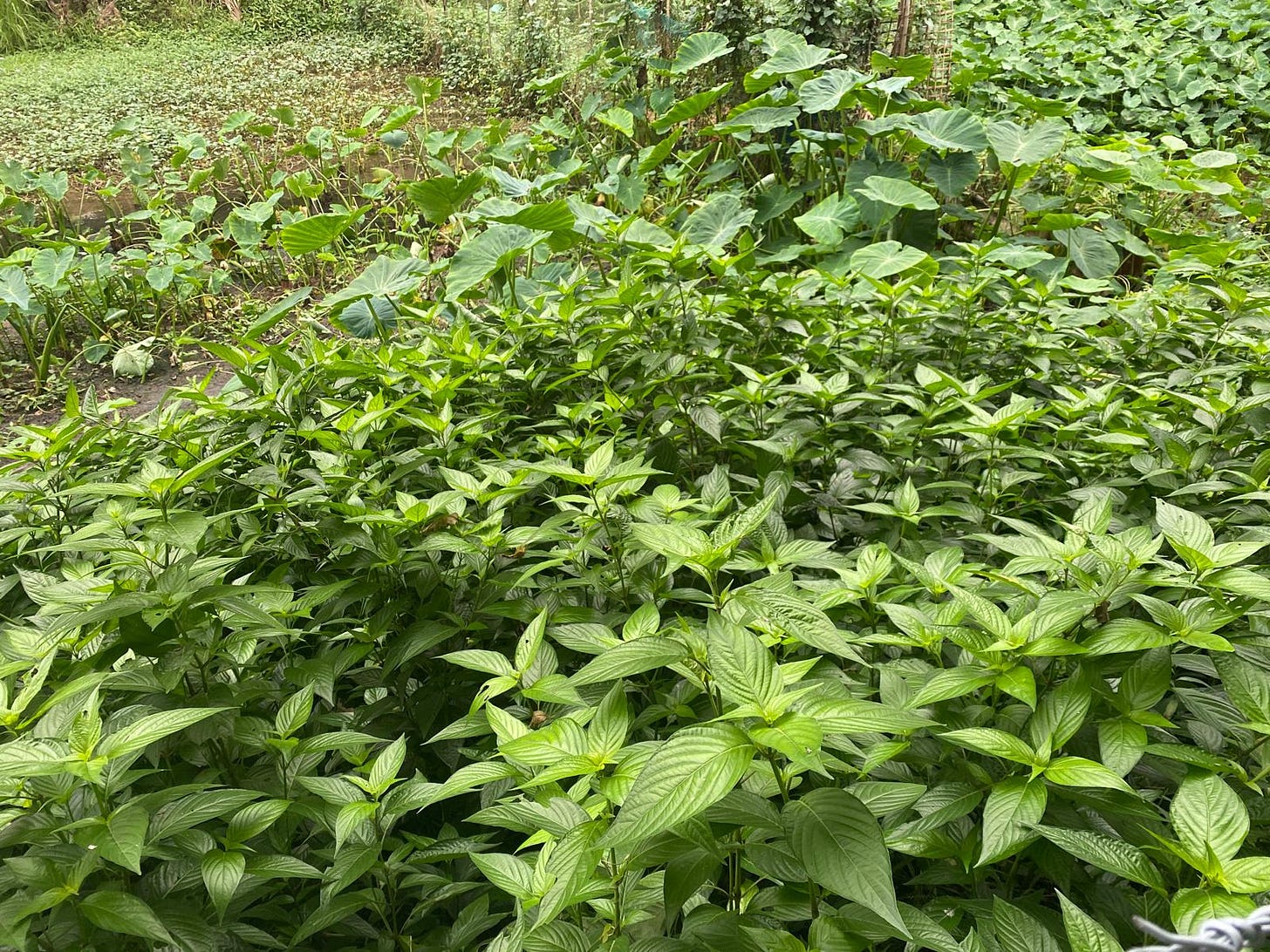
He also brought us to his neighbour’s place, just five minutes away up a slope, to show us another plant that has very similar looking leaves and is used for making the sticky rice red. The leaves of this plant are a lot smaller with white hairs on the surface giving it a furry look. We happily accepted a few sprigs of both plants from them to play.
That night as we were relaxing at the front porch of our homestay, we remembered the leaves still in our bags and eagerly added hot water to both leaves and left them to soak for a few minutes.
Within five minutes, the first plant turned the water into an intense magenta that seemed slightly luminous under the light.
The second plant responded a lot slower, but eventually gave a peachy orange colour, similar to the “magenta plant” (Peristrophe bivalvis) we grow in our garden. For a few years, we have been puzzled as to why our magenta plant does not give magenta, but now we suspect they are two different plants. The first plant also has flowers that look very different from ours.
On the morning before checking out of our second homestay, our very sweet host Tan, came to tell us that her neighbour had brought over some bright orange rice to share for lunch. The orange comes from the gac fruit flesh, an odd-looking gourd with bright red skin that we have spotted in a few gardens.
Though there was no special occasion, her neighbour dyed the rice just for it to look more appetizing. She shared some of the rice with us; it has a mildly sweetened but not overpowering flavour. We would have to come back another time to experience their new year celebrations and taste all the different coloured rice.
Thank you for reading!
We hope that you enjoy reading this post from masak-masak colour.
Help us to continue to grow our newsletter by sharing with friends who would enjoy reading it, or subscribe to our newsletter if you would like to stay updated.
We have some upcoming events for this year, and folks in the West may like to know that we are hosting some open making sessions with Jurong Regional Library in January and February called “Rice as Binders”. Join us if you are curious!
Hope you had a gentle landing in the new year, and we wish you all a healthy and beautiful year ahead with loved ones. <3
Weeee,
Liz and Shirin





